Moondrop Chu II DSP
EQ Measurements Review of the Moondrop Chu II DSP
The normal version Moondrop Chu II arrived last year into a much more crowded market that the original Moondrop Chu and it was somewhat forgotten amongst the various cheap and well tuned IEMs that also appeared in the past year, like the Salnotes Zero 2 and the Truthear Zero Red. But Moondrop have cleverly repackaged the ChU II with a version of their CDSP cable (not the FreeDSP but their cheaper $14.99 DSP cable).
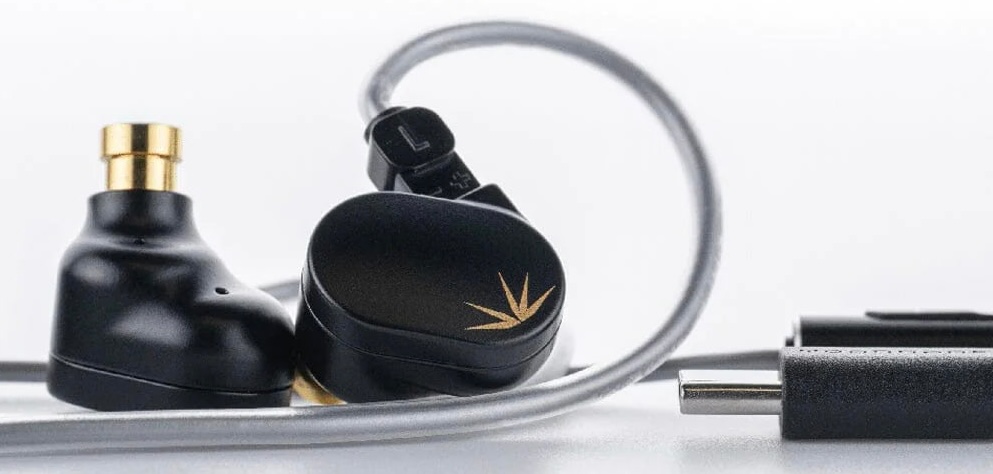
I liked the original Moondrop Chu, so when I spotted the Chu II DSP in a recent sale on Linsoul for $23.99, I thought why not see what this incredible cheap IEM can do compared to the competition especially around the PEQ.
Note: The challenge up to now with these ‘DSP enabled’ cables has been the quality of the accompanying applications required to configure the DSP options, so far both Moondrop’s and FiiO’s App have been buggy and while the Tanchjim App ( for the One DSP ) was mostly pretty good it was very limited compared to for example, the venerable Qudelix 5K application or any PC or Android EQ application.
So I thought I would give the Moondrop a thorough measurement based ‘EQ review’ - I hope people find it useful.
Note: I did add a more traditional subjective ‘review’ later on but this in this review I will concentrate on measurements
But let’s get onto the measurements:
Moondrop Chu II DSP Measurements
Note: All these measurement were made with my 711 ‘clone’ coupler and I have attached the REQ file and upload them to my blog here
Channel matching via Analog Cable
So before measuring the DSP cable itself, I thought it would be useful to just measure the Chu II with a traditional analog 2-pin cable, and then we can see what differences the DSP cable makes
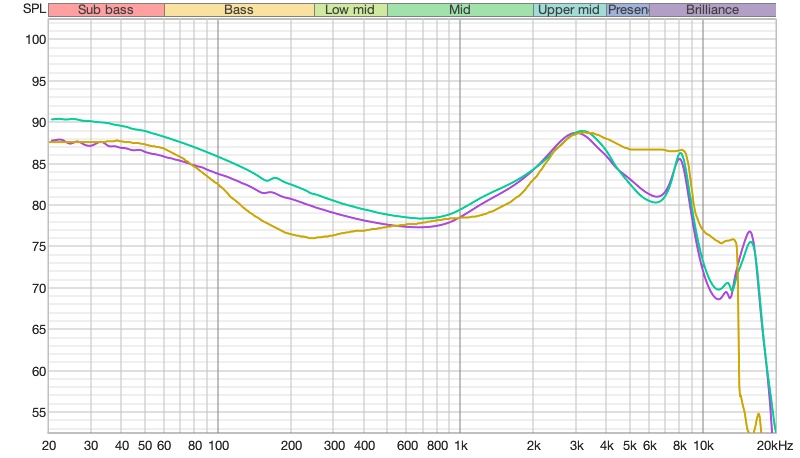 The right channel has slightly higher bass but mostly there is good channel balance.
The right channel has slightly higher bass but mostly there is good channel balance.
Left channel DSP cable (No DSP) versus Analog cable
Next I thought lets compare the DSP cable (with all the DSP ‘gain’ set to 0) versus the analog cable - to see if there is any inherent change in FR when using the ‘DSP’ cable:
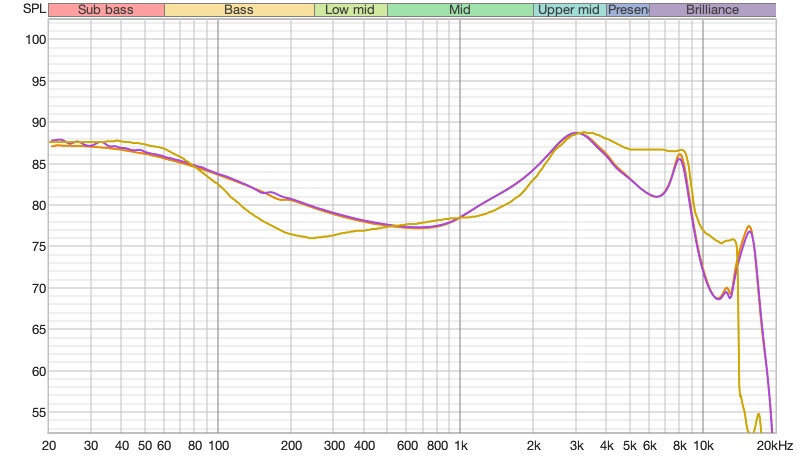
Thankfully these are identical as far as FR, but it should be noted that they dropped 3db which allows the DSP some ‘gain’ within the Application. I continued to use the DSP cable for the majority of the rest of the measurements.
Distortion
Very low distortion - even with the PEQ enabled:
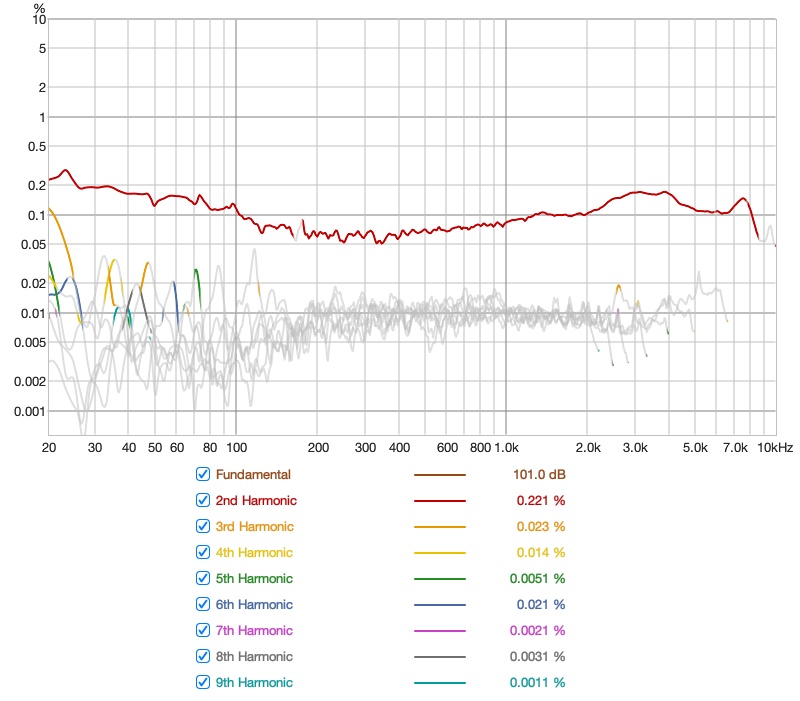
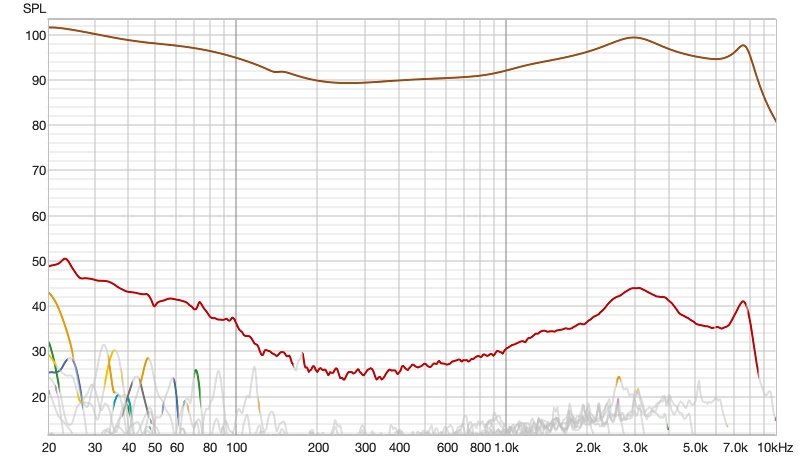
Group Delay
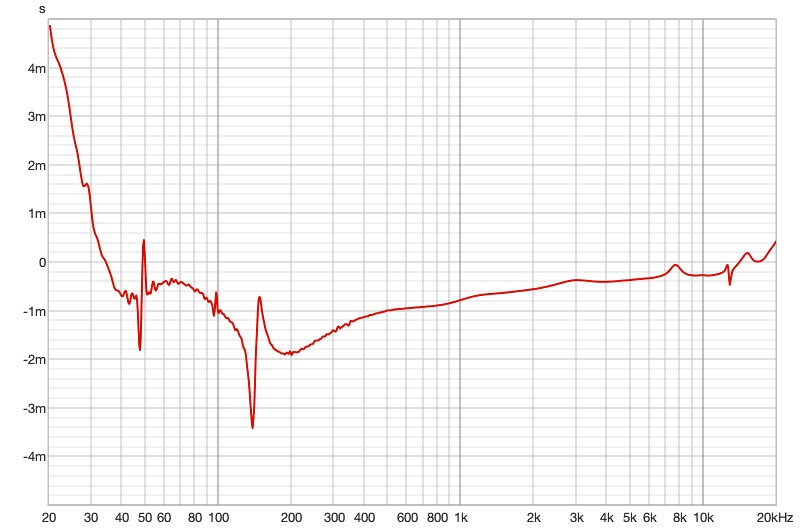
Moondrop ‘recommended’ EQ Measured
Now that we know we have a low distortion cable I think its fun to measure that we can do with the built-in PEQ of the cable. It’s time to really play with the EQ / PEQ within the Moondrop Link App.
The App has improved greatly since my first experience with it with the FreeDSP cable, but It’s still far from perfect.
Moondrop Link App ’experience’
Note: The Moondrop Link App v2.0 is Android only currently and even then the latest version seems to be available as a download from Moondrop Website (so be prepared to relax your security on Android and ‘Allow Unknown source’ to get the latest version)
Where you plug in your cable you are presented with your ‘Moondrop devices’:
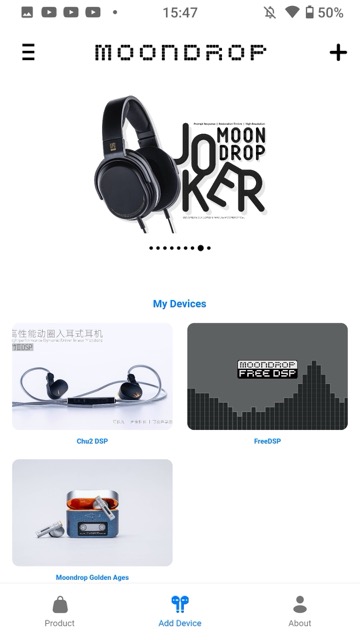
Picking the Moondrop Chu II DSP you are show the current PEQ filters:
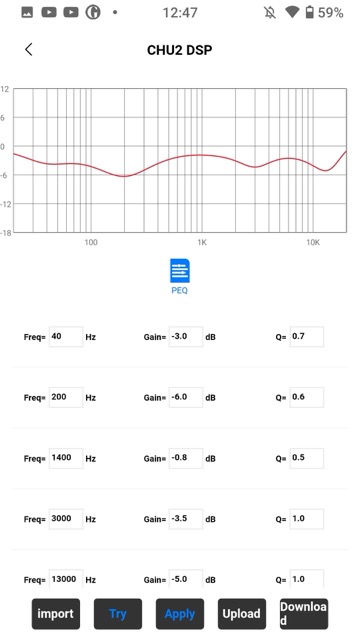
Clicking the ‘buttons’ at the bottom of this page - specifically the ‘Download’ option bring up some alternative tunings:
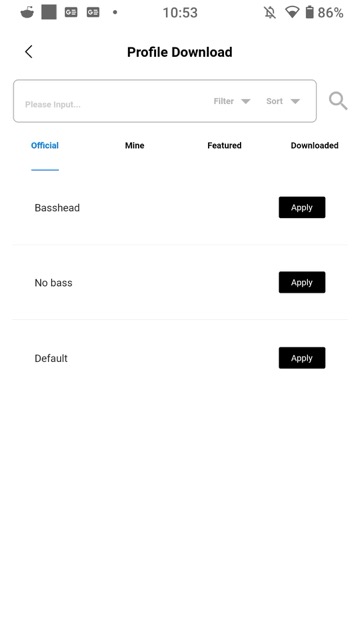
So of course I measured each of these 3 options:
First the ‘Default’ which is what it comes with, but it’s not the same as the NoDSP (so different from the original
Moondrop Chu II) and subjective I found it the best of these three:
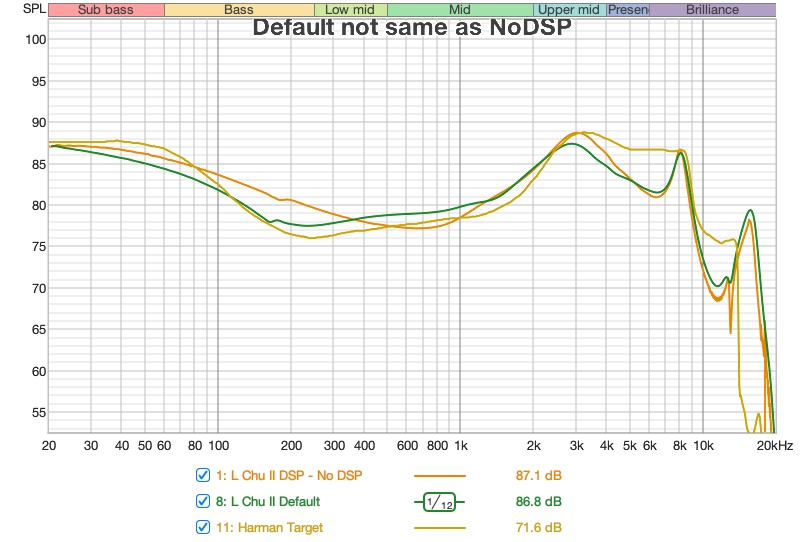
Then the ‘No Bass’:
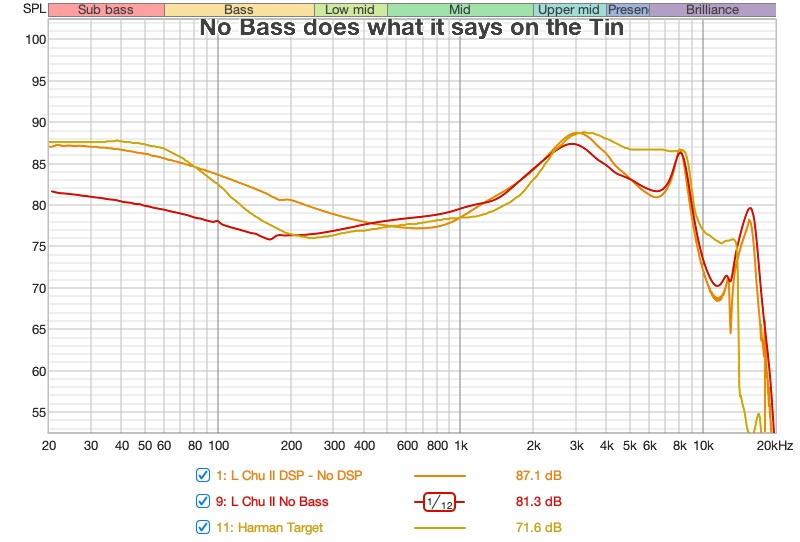
And finally the ‘Basshead’ option:
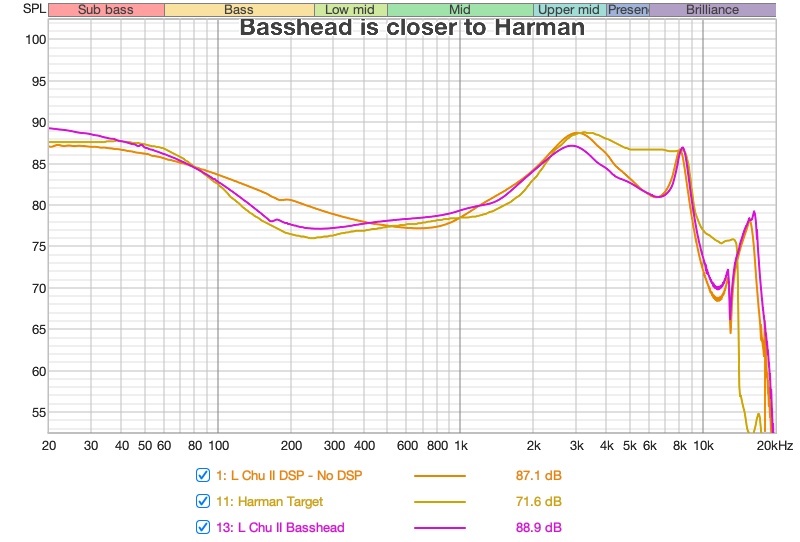
Finally all three against each other:
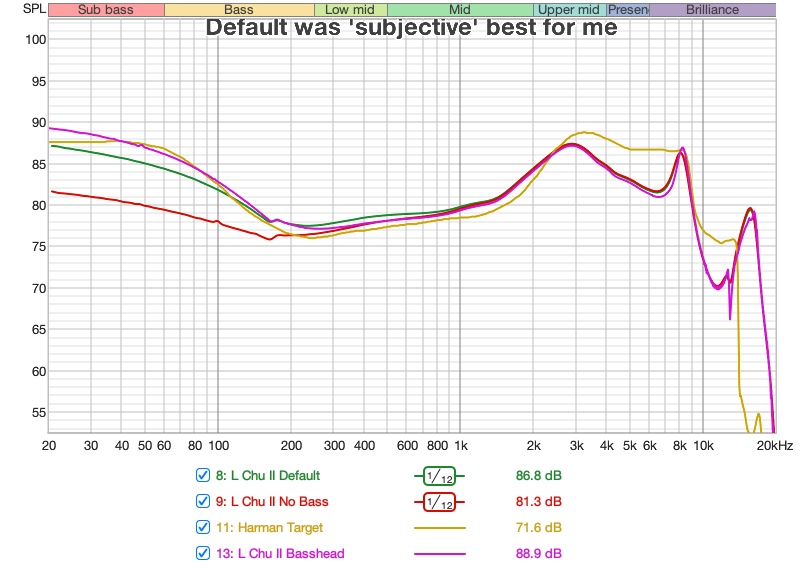
Switching back to the PEQ to test some of the limits as there are significant limits with these cables PEQ filters, specifically these are the limits I found:
- 5 Filters only ( FreeDSP has 10 )
- Lowest frequency allowed is 40hz (which does make it harder to bring down the sub-bass)
- Gain range is limited to -12b to +3db
So I tried and measured some of these limits:
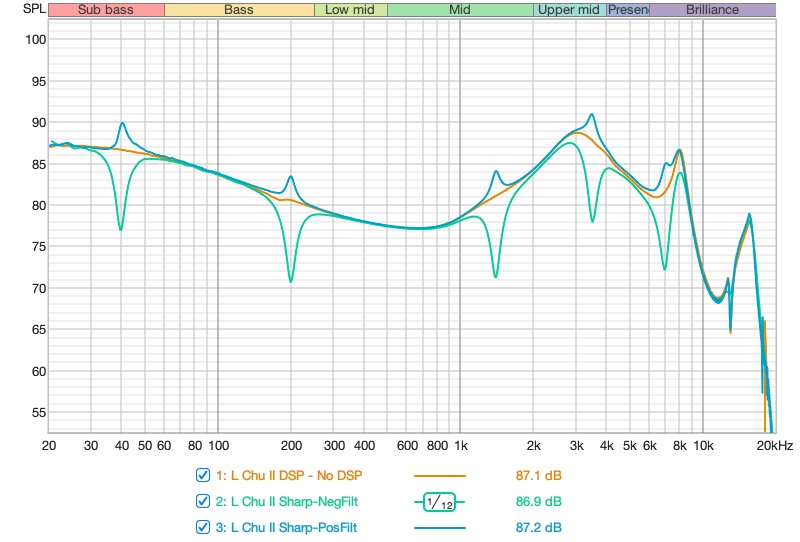
Here is an example of what these look like within the Moondrop App:
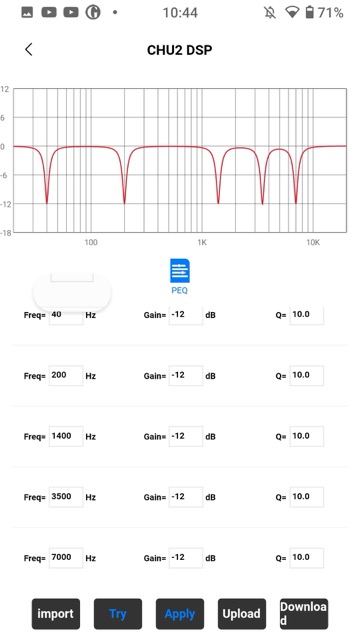
Testing the width of the filters - I just did 2 wide Q values one positive and one negative:
- 200 Hz -12db Q 0.1
- 3K Hz +3fb Q 0.1
So you can make si
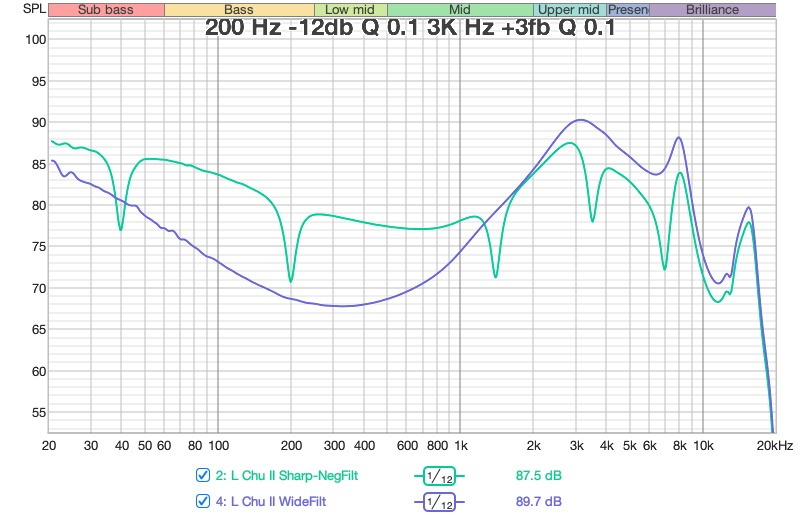
Practical ’tuning’
So, obviously I apply EQ to bring the Chu II DSP even closer to harman, which is close to the ‘Basshead’ option within the App but since I have Truthear Zero Red which I have also measured on this 711 coupler I thought it might be a bit of fun the see could I use the 5 PEQ filters to turn the Moondrop Chu II DSP into the Truthear Zero Red (or get it very close).
So starting with the Truthear Zero red (relative to my ‘harman’ target )
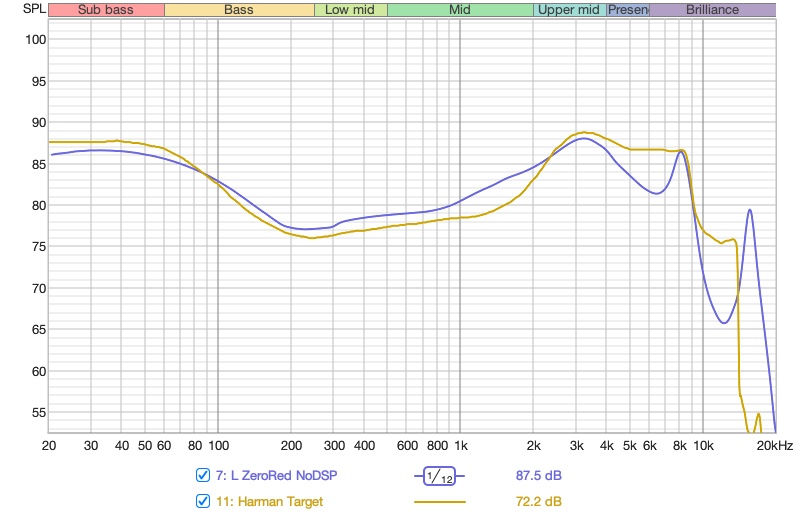
Then using some basic filters to align the Chu II to the truthear zero red after measuring it again:
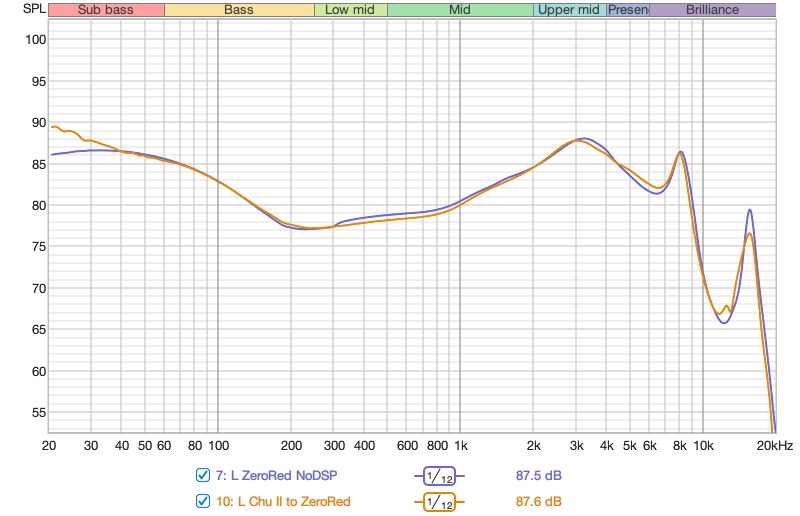
These filters were as follows:

And finally, I also used Moondrop ‘Upload’ Option, within their App to see if this ‘shares’ these filters with their community.
Subjective Section
So after all these measurements and PEQ options, I thought I would share some basic subjective options I had in general about the Moondrop Chu II DSP.
Here is the box you get:
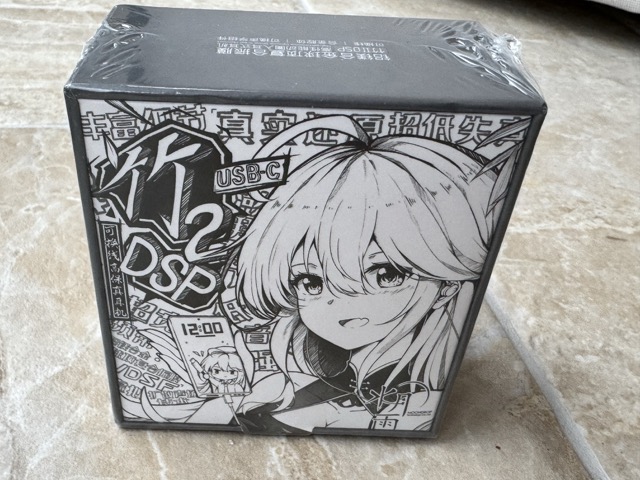
What’s in the box
You can’t expect much of an experience for $23.99, and it is very basic:
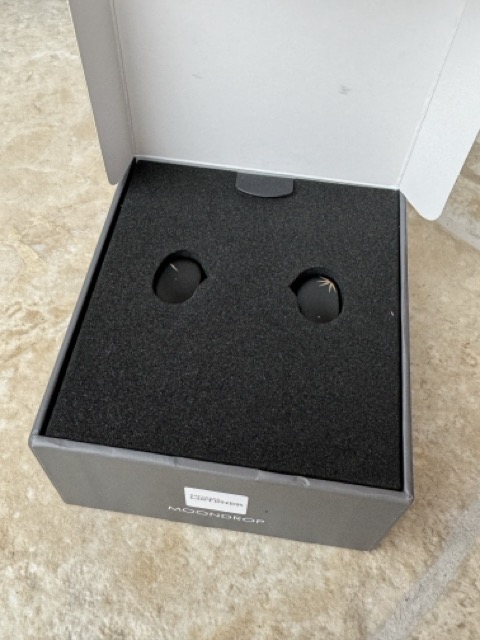
Some of the basic specifications on the back of the box:
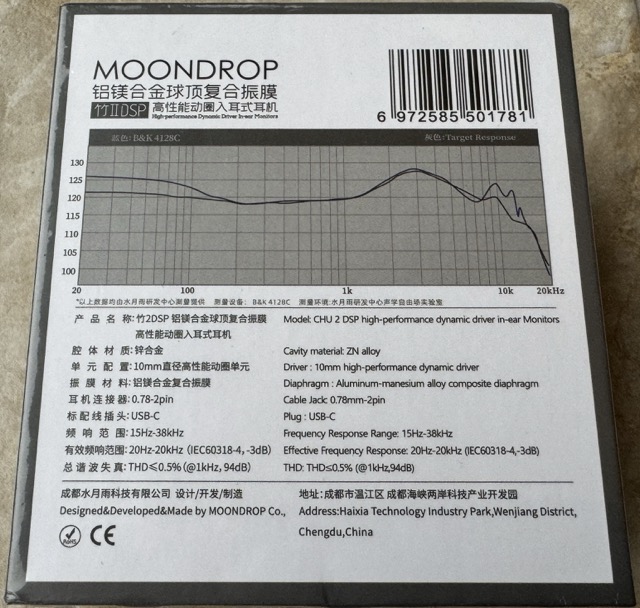
Note: the cable supports up to 24bit and 96khz:
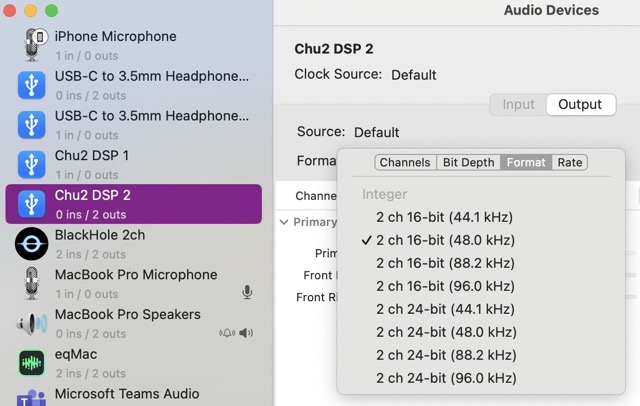
Here is everything you get in the box:
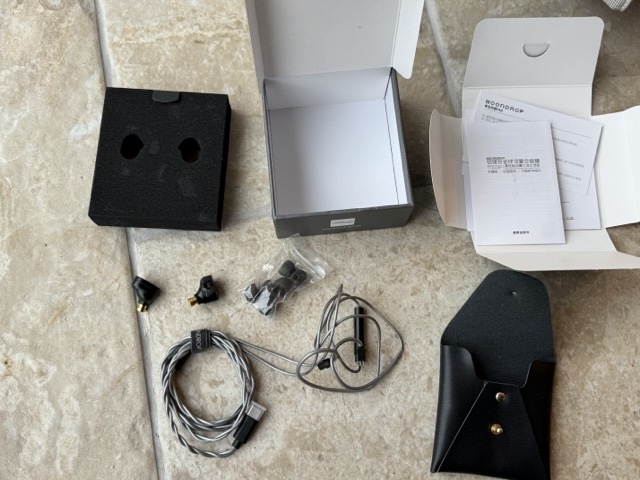
Design and Build Quality
So while the cable is ‘fine’ it is very cheap and tangles incredible easily. The microphone quality was pretty poor also.
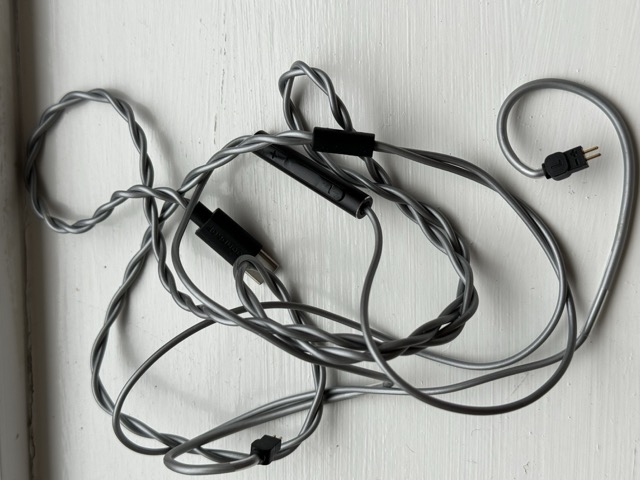
The FreeDSP cable and the DSP cable I have with the Tanchjim One DSP IEM are better quality:
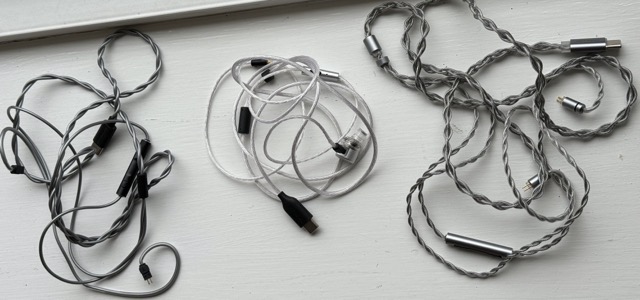 The FreeDSP one is on the left.
The FreeDSP one is on the left.
Comfort and Fit
This is very subjective, but I also found it was not as comfortable as either the original Moondrop Chu or even the Tanchjim One DSP, the bullet style of the One DSP fitted my ear better. Its detachable 2-pin connector was actually rubbing against my ear slightly making it slightly less comfortable. Here is a few photos, with the original Chu:
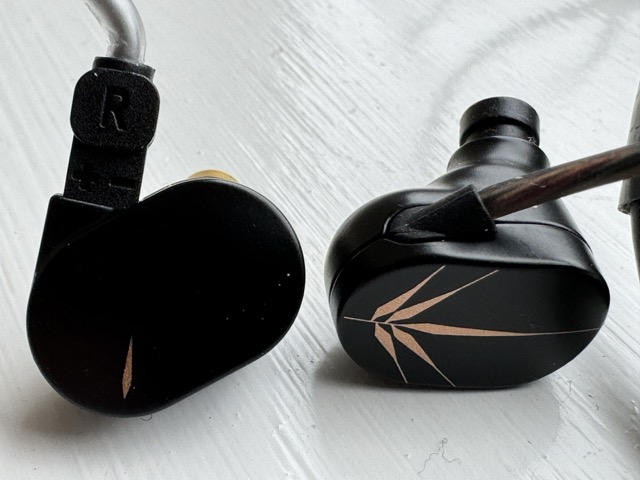
And against the Truthear Zero and Tanchjim One DSP:
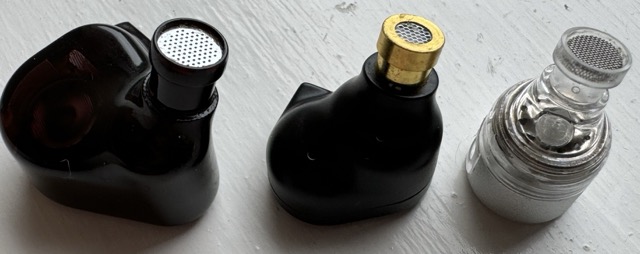
Subjective Sound Quality
Given this IEM is really all about changing the sound profile all I will say subjectively is I liked the ‘default’ sound profile the best of three ‘standard profiles available to down. The ‘Basshead’ and ‘No bass’ options and I really think Moondrop did a nice job with using the DSP in this default ’tuning’ to fix whatever minor issues the original Moondrop Chu II had.
Rating
I gave this IEM an incredible pragmatic score of 5, while I have some minor issues with fit and comfortable you cannot deny what a bargain this IEM provides.
Conclusion
I love the capabilities and price of these newer DSP IEM’s, and it is great to see Moondrop using DSP to ‘fix’ minor issues with the original Chu II but also leaving the PEQ filtering options open to allow people configure this IEM whatever way they want. The Moondrop Link App while not as slick as the Tanchjim App yet, it is improving fast and is far better than it was a few months ago with the FreeDSP cable.